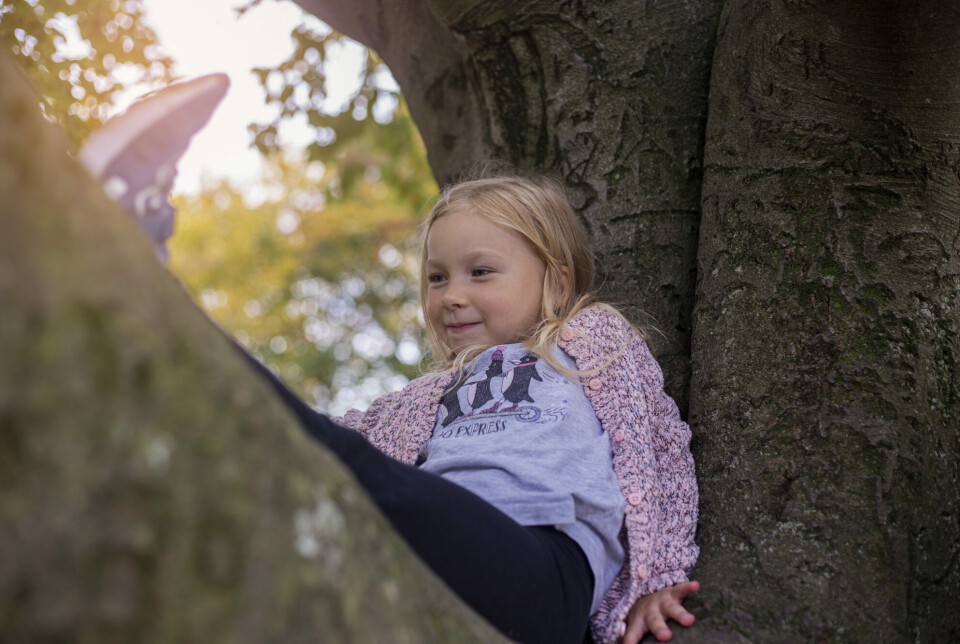THIS CONTENT IS BROUGHT TO YOU BY NTNU Norwegian University of Science and Technology - read more
Surprising findings about ADHD may help girls who are struggling
Girls are particularly vulnerable to developing anxiety disorders, but researchers have recently discovered something that may help slow down or prevent the development.

Researchers at NTNU have found new correlations between ADHD and anxiety. Both are major health issues among adolescents. The two disorders often co-occur in the same person.
What's new now is that the relationship between them appears to be different in girls and boys.
Affect girls and boys differently
There are several types of ADHD. The researchers’ findings are related to one specific type called the inattentive type. A higher percentage of girls have this type of ADHD.
Boys often have the other variant. It is called the hyperactive-impulsive type. Some can have both.
“First and foremost, we have identified a link between anxiety and inattentive type ADHD. And we find that this only applies to girls,” says Lars Wichstrøm.
He is a professor at NTNU's Department of Psychology.
Surprised by major differences
This is the first time researchers have investigated – and shown – that the relationship between ADHD and anxiety differs according to sex, and that this applies to inattentiveness.
“We assumed there were differences between the sexes, but we did not expect them to be so significant,” says Wichstrøm.
He emphasises that they have studied inattention as a symptom of ADHD, rather than ADHD as a disorder.
Reciprocal relationship
The two disorders seem to reinforce each other. In girls, the prevalence of inattention increases the likelihood of more severe symptoms of anxiety disorders during childhood and adolescence.
And: Anxiety in adolescence increases the likelihood that inattentiveness will worsen.
The researchers found no such correlation between inattention and anxiety in boys.
However, they found that increased hyperactivity-impulsivity in the first few years of school increased the likelihood of developing anxiety.
Earlier detection
Anxiety disorders increase significantly during adolescence, especially for girls.
The study concludes that early detection and effective treatment of inattention symptoms in girls can reduce the risk of anxiety later on in life.
Similarly, interventions or treatment for anxiety can reduce the likelihood that attention difficultiesin young girls will increase.

It is well known that ADHD and anxiety often co-occur in individuals. Only a small part of this comorbidity can be explained by shared genetics between ADHD and anxiety, according to Professor Wichstrøm.
He says that they also know that the intensity of ADHD symptoms and anxiety can vary over time.
Why this is the case, however, is not yet known.
Under the radar
On average, five per cent of children and adolescents have ADHD. This is true both in Norway and in other countries where this has been studied.
Girls with the inattentive type are often perceived as shy, introverted, absent-minded, and dreamy – or even lazy.
As young children, they often go under the radar because they rarely cause any trouble or disturb others.
The only symptom they have is inattention. It can be difficult to distinguish this from simply being normally distracted, disorganised, or forgetful.
Missing out on help
This means that girls often receive the diagnosis later in life. As a result, they miss out on interventions that could help limit the development of anxiety later, according to Wichstrøm.
Hyperactive-impulsive type ADHD is most prevalent in boys. It is easier to see and hear those who struggle with restlessness and hyperactivity, who cannot sit still or wait their turn.
As a result, they are detected earlier, diagnosed, and get help more quickly.
Struggle and exclusion
Children who struggle with basic skills may experience exclusion, bullying, and other burdens.
“Personal and social challenges can easily lead to rumination, worry, anxiety, and catastrophising. It seems that girls are more vulnerable when they're exposed to negative life events or bullying. They're more likely to respond with depression than boys,” says Wichstrøm
He has conducted extensive research on anxiety and depression among adolescents.
ADHD is detected through anxiety
Researchers still do not know if there are any common factors underlying and influencing why some individuals develop both anxiety and ADHD.
What they do know is that the older a person is when the diagnosis is made, the more common it is for them to have the inattentive type.
“Generally, as young people approach puberty, the prevalence of anxiety increases significantly – especially among girls, and it's only at that point that their ADHD is also detected,” says Wichstrøm.
Look for signs at ages 8-10
The researchers hope their findings can show the importance of early detection of ADHD in children.
“Anxiety increases significantly in children as early as 12 years old. If we can identify inattention problems before that age, possibly as young as 8 years old, we may be able to reduce or prevent them from developing into anxiety,” says Wichstrøm.
The researchers emphasis that more knowledgeis needed about the intricate connections between sex, ADHD, and anxiety.
An additional step could be to confirm the findings they have made in an even larger study. Wichstrøm would like to see further research on the very youngest girls.

Helping people with ADHD
Wichstrøm is fully aware of the debate about the overdiagnosis of ADHD. He says it is entirely possible that too many end up with a diagnosis.
“But we must still strive to actually detect ADHD where it exists and help those who have it,” he says.
Reference:
Asgarabad et al. Reciprocal relations between dimensions of attention-deficit/hyperactivity and anxiety disorders from preschool age to adolescence: sex differences in a birth cohort sample, Journal of Child Psychology and Psychiatry, vol. 66, 2024. DOI: 10.1111/jcpp.14038
———
Read the Norwegian version of this article on forskning.no
More content from NTNU:
-
Politics on Facebook: Populist parties choose divisive issues on purpose
-
Social media is connected to cyberbullying – but not how we thought
-
Forskere ved NTNU får nesten 24 millioner av EU for å lage nye strømomformere
-
This helps the youngest children enjoy school more
-
Can we tap the ocean’s power to capture carbon?
-
Researchers have uncovered major problems in Norway's salmon industry





































